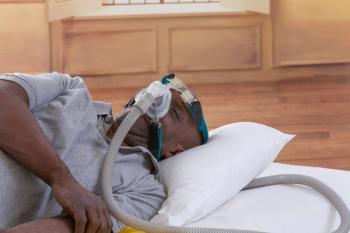
Novel Study Examines Optimal Drug Balance for Patients With Parkinson Disease
Researchers assess the optimal balance of levodopa in patients with Parkinson disease (PD), which wanes in efficacy as PD progresses and can contribute to uncontrollable, involuntary bodily movements if given in too high of a dosage.
In treating
“This can be attributed to different compensation mechanisms taking place in the basal ganglia where the dopaminergic neurons are progressively lost,” explain researchers. “This alteration in the effect of levodopa complicates the optimization of drug regimen.”
Researchers sought to better understand the underlying mechanisms behind these effects. Utilizing a holistic approach, researchers configured a pharmacokinetic model of levodopa, which they then combined with a dopamine dynamics and neurocomputational model of basal ganglia.
“The influence of neuronal death on these different mechanisms was also integrated,” expanded researchers.
Through the model, researchers assessed the nonlinear relationships between levodopa plasma concentration, dopamine brain concentration, and response to a motor task. Additionally, researchers examined the variations in dopamine concentrations in the brain for different levodopa doses and the progressive impact of these nonlinearities on the narrowing of the levodopa therapeutic index.
After confirming the accuracy of their model in predicting behavior such as modification of dopamine dynamics with neuron degeneration, researchers then used it to simulate a patient tapping their finger a few hours after taking levodopa, which is a
“Eventually, as the brain loses more and more of its neurons, its dopamine concentration falls, and no amount of levodopa can compensate for this,” AIP said. “This leads to a competition of effects, in which maintaining low levels of levodopa is not sufficient for treating bradykinesia but continuously increasing the administered levodopa to try to restore dopamine causes dyskinesia.”
In providing insight into how PD evolves, researchers hope that their model can be applied to tailor individual treatments.
"With an optimization algorithm, we can find the optimal regimen–dose and time–according to different criteria for this specific patient," said lead study author Florence Véronneau-Veilleux, PhD, teaching assistant at the Université de Montréal, in the statement.
Reference
Véronneau-Veilleux F, Ursino M, Robaey P, et al. Nonlinear pharmacodynamics of Levodopa through Parkinson’s disease progression. Chaos. Published online September 29, 2020. doi:10.1063/5.0014800
Newsletter
Stay ahead of policy, cost, and value—subscribe to AJMC for expert insights at the intersection of clinical care and health economics.













































